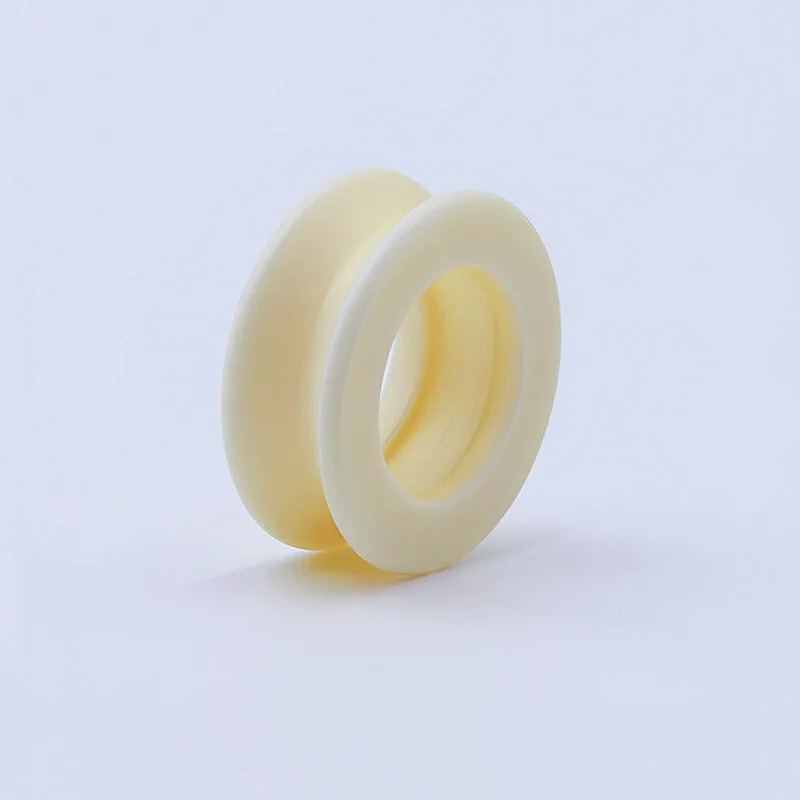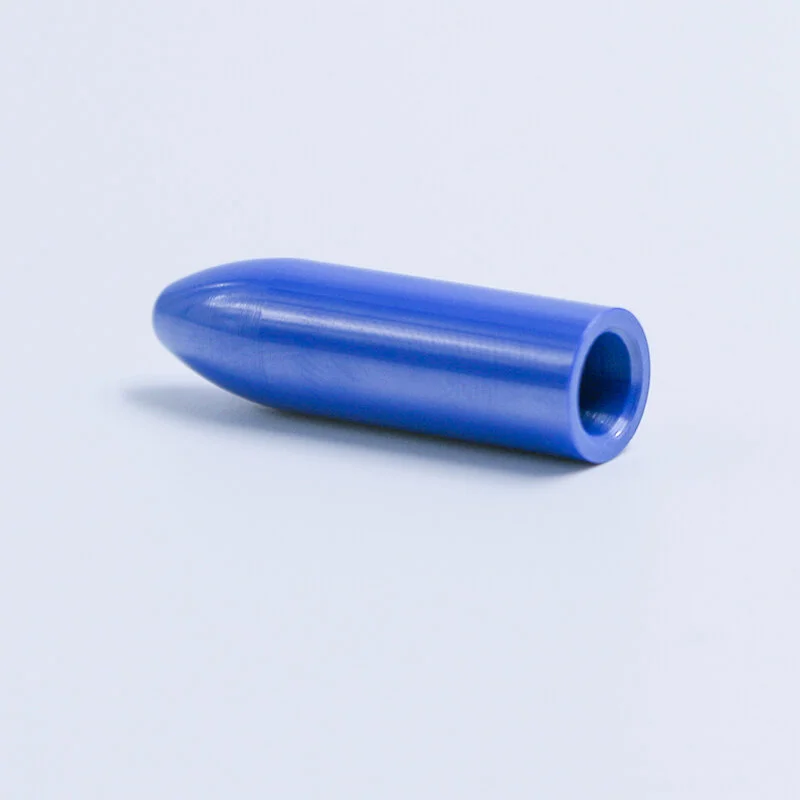
What is Sintered Ceramic? Sintered ceramic is an advanced material created by applying heat and pressure to compact particles into a dense and durable structure. Its exceptional versatility comes from its unique properties, including resistance to extreme temperatures, scratches, and chemicals. With the global market expected to reach $38.9 billion by 2032, sintered ceramics are transforming industries across the globe.
The Sintering Process
The sintering process transforms raw materials into durable and high-performing sintered ceramics. This method involves three critical stages: powder composition and preparation, compaction and shaping, and firing and densification. Each step plays a vital role in creating the final product.
Powder Composition and Preparation
The process begins with the careful preparation of ceramic powders. You mix unfired ceramic powder with water, a deflocculant, and a binder to form a slurry. This mixture ensures uniformity and influences the final characteristics of the sintered ceramic. Historically, sintering has roots in ancient pottery, with civilizations like the Egyptians using similar techniques. Modern advancements, pioneered by figures like William Coolidge, have refined this stage to achieve precise results.
Compaction and Shaping
Once the powder is prepared, you compact it into the desired shape. This step uses extreme pressure to form what is known as a “green” part. Mechanical densification ensures tight tolerances and efficient production. The green part is not yet fully solidified but serves as the foundation for the final product. This stage allows for customization, making sintered ceramics suitable for various applications.
Firing and Densification
The final stage involves heating the green part in a kiln or furnace. Traditional sintering occurs at temperatures ranging from 1,000°C to 2,000°C, while cold sintering uses temperatures below 400°C. During this phase, lubricants are removed, particles fuse, and the material cools down to form a dense, durable structure. This step is crucial for achieving the strength and versatility that define sintered ceramics.
By following these steps, you can create high-quality sintered ceramics that meet the demands of industries worldwide. Understanding “What is Sintered Ceramic?” involves appreciating the precision and expertise required in this process.
Materials Used in Sintered Ceramics
Common Ceramic Powders
The foundation of sintered ceramics lies in the powders you choose. These powders determine the final product’s properties and performance. Commonly used ceramic powders include:
- Alumina (Aluminum Oxide)
- Aluminum Nitride
- Zirconia (Zirconium Oxide)
- Silicon Nitride
- Boron Nitride
- Silicon Carbide
Each of these materials offers unique benefits. For example, alumina provides excellent hardness and wear resistance, while zirconia is known for its toughness and thermal stability. Selecting the right powder ensures the sintered ceramic meets the specific demands of its application.
Additives and Binders
Additives and binders play a crucial role in the sintering process. You use binders to shape the ceramic material before sintering. They provide temporary strength to the unsintered parts, making them easier to handle. During the firing stage, binders burn off or decompose, leaving behind a dense and durable structure. Additives, on the other hand, enhance specific properties like thermal conductivity or electrical insulation. These components ensure the final product achieves the desired characteristics.
Properties of Materials Used
The materials used in sintered ceramics exhibit exceptional mechanical and thermal properties. These include:
- High hardness and mechanical resistance, ideal for high-stress applications.
- Dimensional stability at elevated temperatures, crucial for extreme heat environments.
- Resistance to wear, corrosion, and chemicals, making them suitable for harsh conditions.
- Excellent electrical insulation, perfect for electronic components.
- Durability and environmental resistance, ensuring long-lasting performance.
The sintering process also results in low shrinkage and high densification, enabling the creation of complex and precise structures. These properties make sintered ceramics a versatile solution across industries. Understanding these materials helps you appreciate the answer to “What is Sintered Ceramic?” and its transformative impact on modern technology.
Advantages of Sintered Ceramics
Durability and Strength
Sintered ceramics excel in durability and strength due to their unique properties. The sintering process enhances the material’s mechanical resistance by reducing porosity and increasing particle bonding. For example, smaller particles create a larger binding area, while higher sintering temperatures improve the material’s density and hardness. These factors make sintered ceramics ideal for high-stress applications, such as industrial machinery and automotive components.
| Factor | Contribution to Strength and Durability |
|---|---|
| Binding Area and Particle Size | Smaller particles increase binding area, enhancing strength. |
| Sintering Temperature and Pressure | Higher temperatures improve bonding; pressure reduces porosity. |
| Porosity | Lower porosity leads to higher strength; affected by sintering conditions. |
| Material Composition | The mix of materials influences overall strength and durability. |
These properties ensure long-term performance, even in harsh environments.
Precision and Customization
Sintered ceramics offer unmatched precision and customization options. Advanced manufacturing techniques, such as microwave sintering and flash sintering, allow you to achieve intricate designs and uniform properties. You can also choose from various shaping methods based on your requirements:
| Method | Shape Complexity | Size Range (mm) |
|---|---|---|
| Dry Pressing | Simple | Height: 0.3 to 60, Diameter: 5 to 500 |
| Powder Injection Molding | Complex | Not suitable for large sizes |
| Isostatic Pressing | Complex and elongated | High-density parts |
These options enable you to create components tailored to specific applications, from electronics to medical devices.
Cost-Effectiveness and Efficiency
Sintered ceramics provide significant cost-saving benefits, especially in large-scale production. The cold sintering process (CSP) reduces energy consumption by operating at temperatures below 300°C, compared to traditional methods that exceed 1,000°C. This technique also lowers capital costs and minimizes CO2 emissions, making it an environmentally friendly choice. Industries adopting CSP benefit from a better return on investment and reduced operational expenses.
| Benefit | Description |
|---|---|
| Energy Consumption | Cold sintering reduces energy use from over 1,000°C to less than 300°C. |
| Capital Costs | CSP is the most economically attractive sintering technique with lower costs. |
| CO2 Emissions | Significant reduction in CO2 emissions, enhancing environmental benefits. |
These advantages make sintered ceramics a practical and sustainable solution for modern industries.
Applications of Sintered Ceramics

Industrial Applications
Sintered ceramics play a vital role in various industrial sectors due to their exceptional properties. You will find them in:
- Automotive: Components like gears, bearings, and engine parts benefit from their high strength and wear resistance.
- Aerospace: These ceramics are essential for turbine engines and structural elements that endure extreme temperatures and corrosive environments.
- Electronics: Capacitors, semiconductors, and circuit boards rely on their thermal and electrical insulation, supporting miniaturization and efficiency.
Their ability to withstand harsh conditions makes them indispensable in these industries. For example, aerospace applications demand materials that maintain integrity under extreme heat, while automotive components require durability and precision.
Medical and Dental Uses
In the medical field, sintered ceramics offer biocompatibility and precision. You can find them in implants, prosthetics, and surgical tools. Their non-reactive nature ensures compatibility with the human body, reducing the risk of rejection. Dental crowns and bridges made from zirconia provide strength and a natural appearance. These ceramics also enable the production of intricate surgical instruments, ensuring reliability during critical procedures. Their unique properties make them a trusted choice for healthcare professionals worldwide.
Consumer Products and Electronics
Sintered ceramics enhance the performance of consumer electronics and everyday products. Their benefits include:
| Benefit | Description |
|---|---|
| Thermal Insulation | Exceptional thermal insulation properties, essential for high-performance components. |
| Electrical Insulation | Excellent electrical insulators, preventing the flow of electric current. |
| Strength | High strength, contributing to durability in miniaturized electronics. |
| Thermal Stability | Maintains performance under extreme temperatures. |
| Wear Resistance | Resistant to wear, enhancing longevity in electronic applications. |
You will find these ceramics in smartphones, laptops, and other devices where durability and efficiency are critical. Their insulating properties prevent electrical failures, ensuring reliable performance. By incorporating sintered ceramics, manufacturers achieve compact designs without compromising functionality.
Sintered ceramics represent a breakthrough in material science, offering unmatched durability, strength, and versatility. You benefit from their precise manufacturing process, which combines advanced techniques like cold sintering and microwave sintering to reduce energy consumption and enhance material properties. Emerging innovations, such as two-step sintering and ceramic-polymer composites, promise to expand their applications in industries like electronics, aerospace, and biomedical fields. As advancements continue, sintered ceramics will play a pivotal role in shaping sustainable and high-performance solutions for the future.
🌟 Did you know? Cold sintering can lower production temperatures to less than 300°C, reducing energy use and carbon emissions while creating materials suitable for nuclear waste storage.
FAQ
What makes sintered ceramics from JH MIM unique?
JH MIM ensures high-quality sintered ceramics by adhering to ISO 9001:2015 and IATF 16949:2016 standards. These certifications guarantee precision, reliability, and consistency across all products.
💡 Tip: JH MIM sources premium raw materials from top suppliers in the U.S. and Europe, ensuring exceptional performance.
Can sintered ceramics be customized for specific applications?
Yes, JH MIM offers tailored solutions. Advanced manufacturing techniques allow you to achieve precise shapes, sizes, and properties for diverse industrial, medical, and consumer applications.
Are sintered ceramics environmentally friendly?
Absolutely! JH MIM employs energy-efficient processes like cold sintering, which reduces energy consumption and CO2 emissions. This makes sintered ceramics a sustainable choice for modern industries.
🌱 Note: Choosing sintered ceramics supports eco-friendly manufacturing practices without compromising quality.
